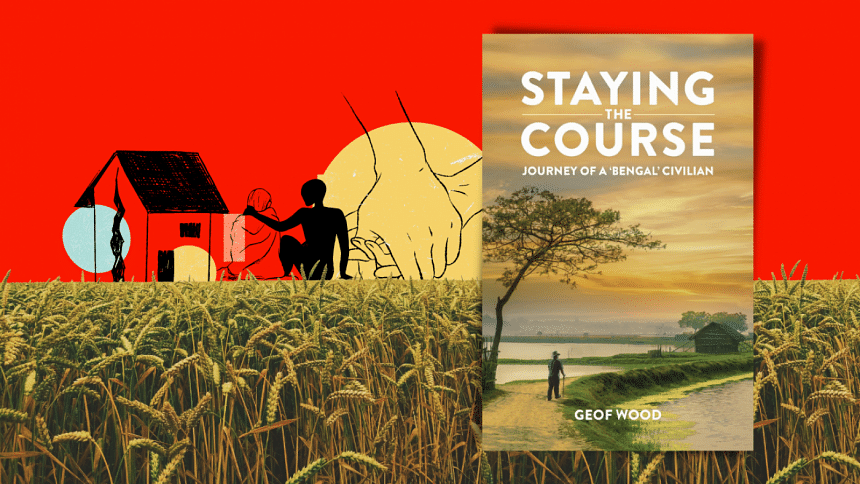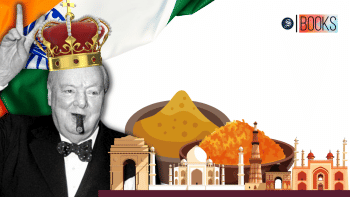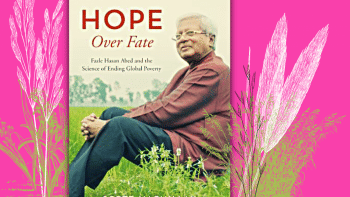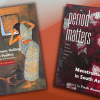A memoir that helps understand development

This autobiographical book is important for recording the experience of a social scientist from the Western academia who researched and spent long periods of his working life mainly in South Asia, and specially in Bangladesh and the Bihar state of India. Unlike the typical foreign development consultants, he considered this region as his second home and gained research insights from his first-hand experience of working closely with institutions and individuals who actually design and implement development interventions at the field level. While his academic life back in England figures only intermittently in the narratives, the focus is mainly on his research and professional work along with anecdotes of personal experiences taking place in this part of the world. In fact, his family life is almost hidden in the background; one can only get glimpses of it in between different phases and geographical relocations of his academic and research activities.
The narratives in the book are fascinating because of the personal touch, the details, and a sense of genuine feelings and empathy towards the subject of the author's research, namely the poor households in rural Bangladesh (and elsewhere in the developing world). The astute reader can perhaps detect a kind of self-reflection on the part of the author that seems authentic–authentic in the sense of simply being honest with oneself and being honest in reflecting about others.
Underlying the apparent narratives of the happenings, there is a less discernible transformation of the mindset regarding the author's relationship with, and attitudes towards the development practitioners and professional partners in the host country. This mental transformation—as admitted by the author poignantly towards the very end of the book—was one of overcoming a minefield of prejudices, which have to do with the intellectual dissonance and arrogance of a Western academic, mixed with post-colonial sentiments of guilt and hypocrisy. At the end though, the author comes out triumphant in this mental struggle, content and satisfied with his redefined identity—or multiple identities—as aptly suggested by the title of the book.
Perhaps the most important contribution of the book lies in providing intimate insights into how the non-governmental development organisations—commonly known as NGOs—work in Bangladesh. The author's experience with one of the large NGOs, namely Proshika, occupies a large part of the book, which is understandable because of his long experience of working with this particular NGO. However, by narrating this experience, the author provides insights into the development contributions of the entire NGO sector in Bangladesh as well as many tensions within the sector. The book thus helps to understand how the NGOs in Bangladesh have evolved over time, such as in respect of their orientation towards service provision visa-a-vis grassroots mobilization; their relationship of what may be characterised as "antagonistic cooperation" with the highly centralised public service agencies; and the strength and weaknesses of the internal governance structure of the individual NGOs.
Over the years, the NGOs in Bangladesh have grown significantly in number and coverage, with massive scaling up of their programmes covering virtually the entire range of social development activities—relief and rehabilitation, social protection, poverty alleviation, non-formal education, essential health services, agricultural extension, environmental protection, human rights, education and advocacy, and so on – with the poor rural women constituting the large proportion of their membership. The early NGOs like BRAC were founded in the aftermath of the liberation war in 1971 mainly to provide humanitarian relief to destitute families in a war-ravaged economy. Later on, as the NGOs gained expertise and experience, many of them incorporated in their activities a social transformational role; some of them were in fact established with the explicit aim of bringing about social change by mobilizing and supporting the poor and landless to get access to government resources. Perhaps the most prominent among these later type of NGOs was Proshika, the one with which the author was involved most closely as mentioned above. Meanwhile, following the lead of the Grameen Bank (which is not an NGO strictly speaking), most NGOs also expanded their activities into group-based microcredit, partly to attain financial viability, but partly also to mobilise poor women around social campaigns.
There has been, however, a gradual but marked shift in the role of the NGOs away from that of social mobilization. Most of the NGOs continued to expand their microcredit and other service provision programmes while gradually scaling down or eventually abandoning their social mobilization campaigns. Thus, the radical stance of social change adopted by NGOs got blunted when nearly all of them, except a handful including Proshika, began to prioritise service provision over 'conscientization' and collective action. This mission drift reflected both the challenges of grassroots mobilization and donor preferences.
The author describes how Proshika went against the prevailing trend and persisted to work through its "primary groups" formed in the 1980s with the intention of creating a political base for the poor to engage on more equal terms with local power holders. Such social mobilization involves engaging with local elites and authorities of power, which is often necessarily confrontational, entailing high cost for the NGOs in the form of backlash.
While the few other organisations working for grassroots mobilisation of the poor found it difficult to scale up their operations, Proshika took the extraordinary decision to flex its muscle in the arena of national politics. Being one of the four largest microcredit organisations, it mobilised its members in support of one of the two major contestant parties in the national election. That led to perilous consequences for Proshika in a winner-takes-all political system that is also highly confrontational. Having had a front-row view of those happenings, the author describes in details the consequent ups and downs of Proshika and their impact on its leadership structure and sustainability of its microcredit operations. In doing so, the author alludes to important issues regarding the future role of NGOs, their public accountability and sustainability, and the socio-political space for their future operations.
Behind the anecdotal narratives, there is all through an underlying connecting thread of the authors' lifelong pursuit of understanding poverty. In these narratives, as well as in the numerous academic works of the author on this topic, the emphasis is on the multi-dimensional aspects of human poverty and on exploring the ways poor families experience their marginalisation in different forms.
However, in contrast to his academic works, the style of narration here is one of story-telling, with no attempt to claim any analytical rigour or derive particular policy conclusions, which makes the book both interesting and accessible. The perceptive reader will become aware of the various factors underlying poverty, including the weakness in the household demographic composition; ethnicity-determined social marginalisation and exclusion resulting in lack of rights and access; the poverty pockets created by ecologically vulnerable environment and remoteness from economic growth centres; livelihood vulnerabilities including health crises and lack of resilience in dealing with shocks from natural calamities; intergenerational reproduction of chronic poverty; and a host of other less understood social and economic constraints. Poverty has to be therefore understood in terms of the household-specific idiosyncrasies defining "who the poor are". One may thus be reminded of the opening sentence of Leo Tolstoy's epic novel Anna Karenina: Happy families are all alike; every unhappy family is unhappy in its own way.
Just as poverty can be multi-faceted, there can also be various approaches to understanding and analysing poverty. An underlying theme of the book is how the author's own approach to poverty analysis has been transformed over the span of about four decades and a half since he first arrived in Bangladesh, academically equipped, in his own words, "as a Marxist sociologist with anthropology and development in my repertoire". In this "epistemological journey", as he briefly describes it in the final paragraphs of the book, he shifted from, or modified his approach, away from the deterministic Marxian tradition that explains poverty and its reproduction solely by the given institutional and social structures ridden with class, caste and power inequality.
That there is more to the story is revealed as one observes at the micro-level how individual families respond variously to the obstacles and opportunities, which in turn may influence the social structures themselves. An understanding of the "true sociology of poverty" remains therefore incomplete without a realisation of these micro-macro interactions.
The above shift in the author's approach to poverty analysis may have been influenced by his observation of how households in rural Bangladesh deal with poverty, whether coping or escaping. Compared to many other societies, rural Bangladesh is characterised by relatively less pronounced social barriers of class, caste or ethnicity faced by the poor. While there is a lot of churning in and out of poverty, even the poor can aspire to avail of the opportunities such as created by the rapid spread of microcredit, the increasing flow of temporary labour migration overseas, and the rapid expansion of export-oriented garment industry providing employment mostly to young women from poor families. Compared to other developing countries, the poor in Bangladesh has also been found to be more receptive to new affordable development ideas.
This largely explains how Bangladesh could have achieved remarkable progress in some social development indicators like reducing fertility rates through adoption of modern contraceptive methods, reducing child mortality through immunisation and the use of oral saline for diarrhoea treatment, and increasing female school enrolment.
The poverty dynamics in Bangladesh need also to be explained by the meso-level factors like changes in the agrarian structure. Elsewhere in his academic work, the author has advanced an important hypothesis that, unlike, say, in north India, the increase in agricultural productivity in Bangladesh has not been sought through farmers' cooperatives or redistributive land reforms.
That route to agricultural modernisation was not even feasible, given the fragmentation of land holdings into tiny plots through inheritance in an extremely dense population, along with the record of failure of the Comilla BARD-type model of farmer co-operatives. Instead, the infusion of investment and modern agricultural technology found its way through the imperatives of small-scale modern irrigation technology provided by the owners of shallow tube-wells, thus forcing the farmers to cooperate within the command area of the tube-wells.
The nature of Bangladesh's progress in the social development indicators achieved so far also reflects on the role of the NGOs discussed earlier. The NGOs have been an important partner in the social development campaigns as well in service delivery; and since their interventions largely target poor households, mostly women, the progress achieved has been broad-based enough to benefit the poor. But the NGOs have hardly been able to work effectively as community-based organisations, or leverage local government institutions, in order to enable the poor to claim public services or to sanction service failures. This perhaps explains an apparent paradox: in spite of the improvements in social development indicators achieved mostly by using the female agency, Bangladesh performs poorly in such aspects of female well-being as the incidence of child marriage, or poor women's access to reproductive healthcare, or repression and violence on women.
There are of course other so-called paradoxes or puzzles in the broader narratives of Bangladesh's surprisingly rapid socio-economic progress. Against formidable odds, such as extreme land scarcity, proneness to natural disasters and allegedly dysfunctional governance, the country has achieved steady and accelerating economic growth. Even more remarkable has been the progress in some key human development indicators, in which the country has transformed itself from being a laggard to a leader among comparator countries. This has taken place in spite of very poor quality of public service delivery along with much too low per capita levels of public social spending. Various hypotheses have been advanced to explain these apparent puzzles, such as in terms of the entrepreneurial drive of the people and their eagerness to adopt new affordable development ideas—often facilitated by the NGOs—as discussed earlier. Such rapid progress cannot however just happen in a vacuum of governance. It is now agreed that, in spite of allegedly poor quality of governance, the measures taken by the successive governments have also played a key role—sometimes in a facilitatory way, but at other times, quite proactively.
The question remains as to how a corruption-ridden governance structure based on patronage politics as in Bangladesh could perform such a developmental role. The author, along with his co-authors in his academic works, has sought the answer from the point of view of political sociology. The quality of the governance structure may by lacking by the standards of the Western liberal democracy, particularly in terms of the institutional mechanisms of democratic accountability. But a government seeking legitimacy from an aspiring citizenry, which gained independence through a bloody liberation war, may be inclined to take a developmental public welfare stance even while pursuing rent-seeking patronage politics. An implicit kind of "social contract" may have worked in place of formal institutions of accountability. However, whatever explanations may be offered to explain the so-called paradoxes, scholars mostly agree on what may be encapsulated by the title of a best-seller book on business studies: What got you here won't get you there. For example, could the legitimacy-seeking accountability mechanism alone provide enough countervailing force against the governance problems of a more modern, rule-based and globally integrated economy? And while far stronger public resource mobilisation will be needed in future for improving the quality of public services and to protect environment, will it be possible for the government to go against the elite interest to raise the revenue-GDP ratio that has remained one of the lowest among the developing countries? Can the current 'social contract" as espoused by the author, among others, continue to hold?
Apart from his rethinking of the rigid Marxian approach to poverty analysis, the book also reveals the author as an action-researcher – one who is not only interested in applied poverty research but also would like to engage in translating ideas into action. For example, the author appears to advocate the idea that even if grassroots mobilisation of the poor may be lacking,much can be perhaps achieved by creating awareness about poverty at the national-level discourses, thus making a legitimacy-seeking regime more inclined to taking a welfarist stance.
Towards this end, he has worked closely with the donor and government agencies as well as NGOs including BRAC, particularly in the later phases of his work in Bangladesh. In particular, the poverty analysis undertaken by the author in collaboration with other researchers from Bangladesh and abroad provided important inputs for the Planning Commission of Bangladesh to set up an inter-agency platform that works as the focal point for knowledge, practice, experimentation and evaluation related to eradicating extreme poverty. This also led the Planning Commission to devise a comprehensive national social safety net programme that recognises the multi-faceted nature of poverty and livelihood risks, thus calling for a mix of appropriate support measures. It is not often that one sees academic research, even of an applied nature, having such a strong link with actual policy initiatives undertaken by the government's implementing agencies.
Besides being an important contribution to autobiographical as well as poverty literature, I hope the book will be of interest to a wide spectrum of readers including development practitioners, academics and public intellectuals.
Wahiduddin Mahmud is an economist and a member of the United Nations Committee for Development Policy. He has retired as Professor of Economics at the University of Dhaka.

 For all latest news, follow The Daily Star's Google News channel.
For all latest news, follow The Daily Star's Google News channel. 










Comments